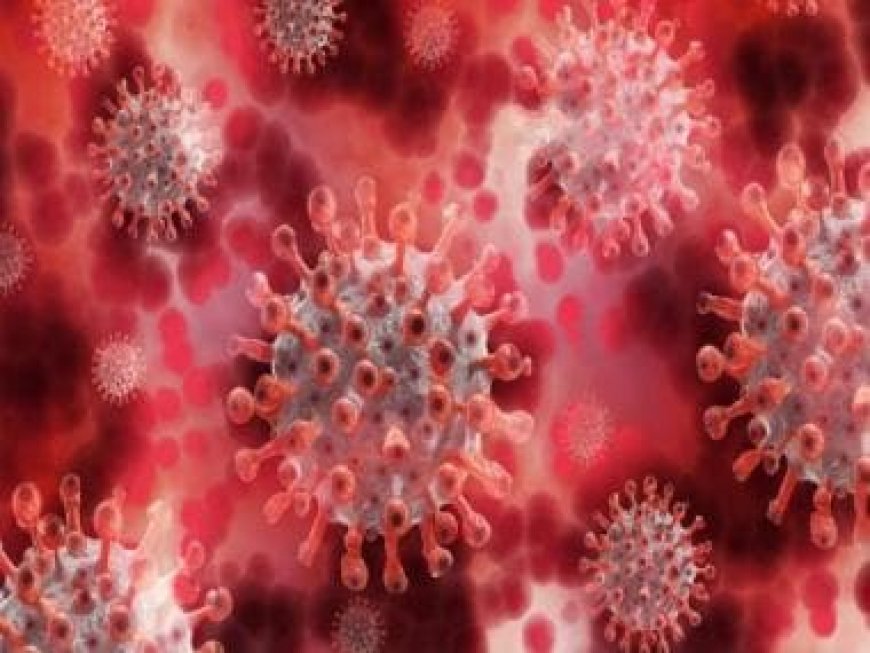Inching closer to HIV cure: Indian researchers identify circular RNA, key to HIV-1 multiplication
Inching closer to HIV cure: Indian researchers identify circular RNA, key to HIV-1 multiplication

Scientists have come a step closer in finding cure for human immunodeficiency virus (HIV), with researchers of from Indian Institute of Science Education and Research (IISER), Bhopal identifying a circular RNA that plays a crucial role in the replication of HIV-1 virus.
HIV remains a major global public health issue that has claimed 40.4 million lives so far globally.
For long, the role of circRNA in HIV-1 replication remained unclear. The groundbreaking discovery by IISER Bhopal researchers of identifying a specific circular RNA circRNA called ciTRAN that plays a crucial role in the replication of the AIDS-causing HIV-1 Virus within the Human body, opens up new avenues for the development of novel therapeutic interventions for the disease.
The findings of this study have been published in the esteemed peer-reviewed journal Science Advances.
Led by Dr. Ajit Chande from the Department of Biological Sciences at IISER Bhopal, this research sheds light on how ciTRAN facilitates the copying of genetic information from the virus, thereby enhancing the HIV replication efficiency.
What is circRNA
Ribonucleic acid, or RNA, is a fundamental molecule in living cells responsible for carrying genetic information and aiding in protein production. While most RNAs have a linear structure with free ends, a unique type known as circular RNA (circRNA) forms a closed-loop.
CircRNAs are known to play a crucial role in regulating gene expression and are essential for various biological processes. However, their involvement in HIV-1 replication has remained elusive for a considerable time.
Challenges in Characterising circRNA
Dr. Chande explained the complexities of characterising circular RNA, emphasising that it is often less abundant, making its detection in its native form a challenging endeavor. He likened the process to following a complicated recipe. Additionally, when examining RNAs during viral infections, the vast amount of viral information can overshadow less common ones like circRNA. Therefore, innovative approaches were needed to identify and understand the roles of these less common RNA molecules.
A Novel Approach: circDR-Seq
To overcome these challenges, the researchers developed a pioneering approach called ‘circDR-Seq.’ This method enabled them to successfully capture circRNAs from T-cells (white blood cells) infected with the HIV-1 virus. Through this technique, they pinpointed a specific circRNA known as ciTRAN, which plays a critical role in the virus’s multiplication.
Uncovering Viral Hijacking
Dr. Chande, the lead researcher, elaborated on their findings, indicating that the HIV-1 virus utilizes host-encoded ciTRAN to multiply efficiently. This revelation unveils a previously unknown facet of how viruses, including HIV-1, surmount transmission barriers.
Promising Therapeutic Avenues
Apart from this groundbreaking discovery, the researchers also developed a small protein molecule capable of inhibiting viral transcription, specifically concerning virally-induced ciTRAN. By demonstrating how ciTRAN fuels the virus’s replication, this study opens up promising paths for the development of novel therapeutic interventions. Moreover, the creation of a molecule with the potential to inhibit viral transcription represents a significant leap in our efforts to combat HIV-1 and potentially other viruses.
Director of IISER Bhopal, Prof. Gobardhan Das said: “This work opens up new lines of investigations and may provide new leads for host-directed treatments.”
Conclusion
The identification of ciTRAN’s role in HIV-1 multiplication represents a major breakthrough in HIV research. This newfound understanding of viral mechanisms and the development of a molecule capable of inhibiting viral transcription bring us one step closer to effective treatments for HIV-1 and potentially other viral infections.
According to a report by the World Health Organisation (WHO) reports that in 2022 alone, 630,000 people died from HIV-related causes and 1.3 million people acquired HIV. Currently, there is no cure for HIV infection.
What's Your Reaction?



























































